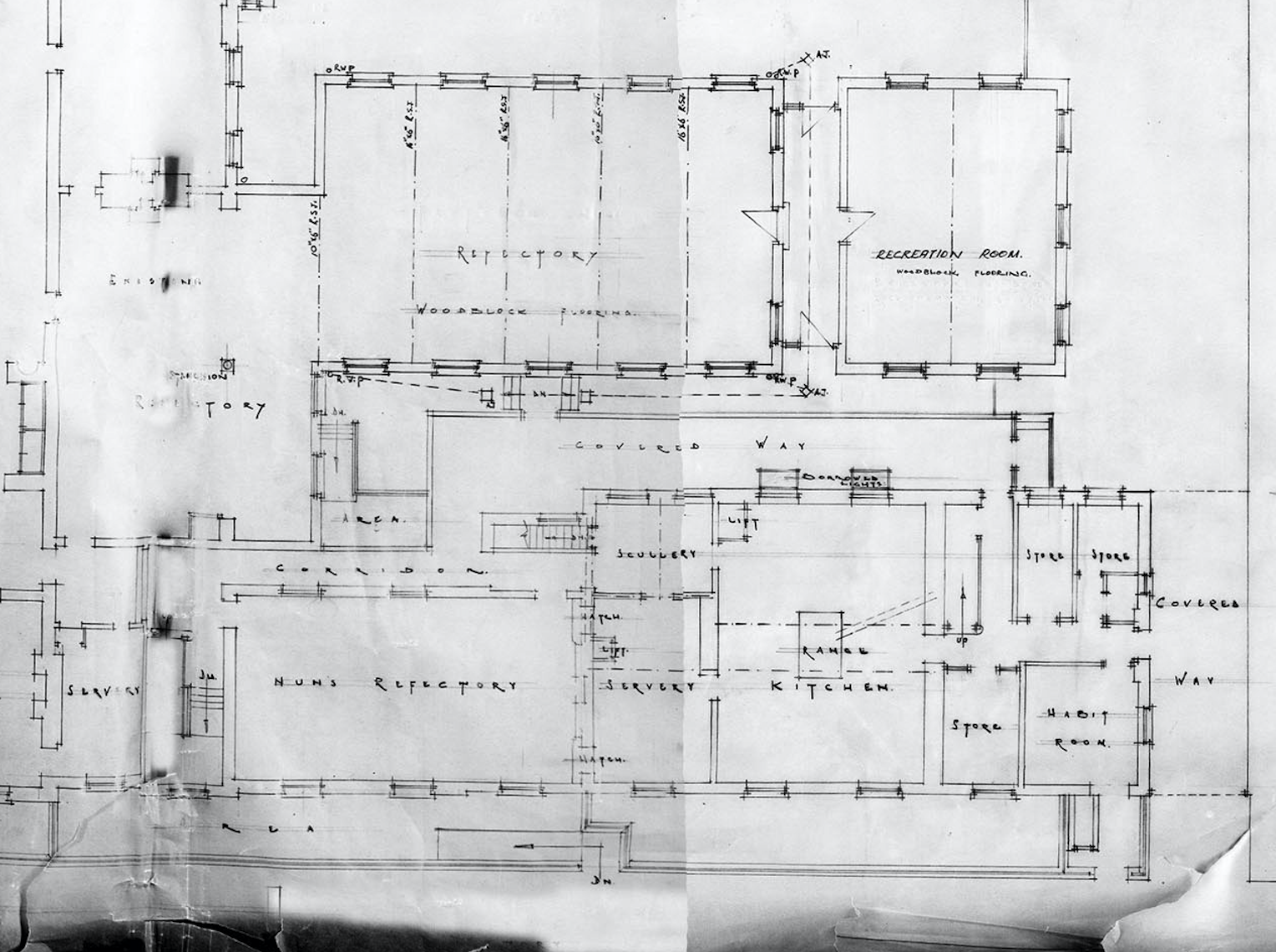Kitchens
Cooking, and the routine of daily meals was a critical part of the daily regimen for the Magdalene Women, and a key marker of the passage of time throughout the day. As such, the Kitchens & Refectory spaces feature prominently in the testimonies of many women interviewed.
“…you know. But I always remember the cockroaches. Seriously like. I couldn’t believe it and I’ve never really seen cockroaches since. The place was riddled with cockroaches. And do you know that the cockroaches used to live in the flour? And we had to use that flour still to make the bread and the cakes for us?”
O’Donnell, K., S. Pembroke and C. McGettrick. (2013) “Oral History of Lucy”. Magdalene Institutions: Recording an Oral and Archival History.
Government of Ireland Collaborative Research Project, Irish Research Council, p.33.
“…did I ever tell you that I tried to commit suicide in there? I took two bottles of Benylin cough mixture but I woke up the next morning! (Laughs) I couldn’t believe it! It just put me to sleep! It was obviously…it wasn’t cough mixture they probably just put something into the bottles. You know, so. Yeah I was so disappointed when I woke up the next morning! (Laughs)…There was…in the kitchen…the kitchen was huge and there was…all the presses were all up on the walls and there was loads of bottles of cough medicines and different types of medicines and I remember robbing the two bottles of…and nobody noticed.”
[Interviewer] “And why d…why did you try to commit suicide?”
“Because I hated it. I absolutely hated it. I…the beatings I couldn’t, I…I oh my God I just can’t…”
O’Donnell, K., S. Pembroke and C. McGettrick. (2013) “Oral History of Lucy”. Magdalene Institutions: Recording an Oral and Archival History.
Government of Ireland Collaborative Research Project, Irish Research Council, p.37
The kitchens and refectory were located at the junction between the Dormitory annex and the main Convent Building facing onto Sean MacDermott St.
Historian Jacinta Prunty notes that in 1910:
‘Pride was also taken over the refectory, ‘a large, bright, healthy, cheerful room’ with ‘hot and cold water and every want amply supplied’. The basement kitchen was similarly extolled in 1910 due to recent investment: the scullery had been extended and a meat safe, lined inside with white tiles…had been built. New also was a ‘large white enamelled trough, with hot and cold water taps for the washing of vegetables.’ The basement floors were newly tiled, the heating pipes had been renewed, the boiler replaced and, it was declared, ‘the whole surroundings in perfect order and neatness.’
Jacinta Prunty, The Monasteries, Magdalene Asylums and Reformatory Schools of Our Lady of Charity in Ireland 1853-1973, Dublin: Columba Press (2017) p. 294
“You might get a boiled egg. That’s what we got in Gloucester Street. If you got anything else I can’t remember…Still do like, and every time I boil an egg it always reminds me of Gloucester Street…”
O’Donnell, K., S. Pembroke and C. McGettrick. (2013) “Oral History of Martina Keogh”. Magdalene Institutions: Recording an Oral and Archival History.
Government of Ireland Collaborative Research Project, Irish Research Council, p.99..

